Format: Summary (text)PubMedPMIDAbstract (text)CSV
Name your collection:
Name must be less than 100 characters
Choose a collection:
Unable to load your collection due to an error
Please try again
Unable to load your delegates due to an error
Please try again
Name of saved search:
Search terms:
Test search terms
Email: (change)
Which day? The first SundayThe first MondayThe first TuesdayThe first WednesdayThe first ThursdayThe first FridayThe first SaturdayThe first dayThe first weekday
Which day? SundayMondayTuesdayWednesdayThursdayFridaySaturday
Report format: SummarySummary (text)AbstractAbstract (text)PubMed
Send at most: 1 item5 items10 items20 items50 items100 items200 items
Send even when there aren't any new results
Optional text in email:
Elsevier Science
Full text links
. 2022 Jun;81:123-133.
doi: 10.1016/j.jsr.2022.02.004. Epub 2022 Feb 16.
Amy Irwin 1 , Jana Mihulkova 2 , Stephanie Berkeley 3 , Linca-Ruxandra Tone 2
Affiliations
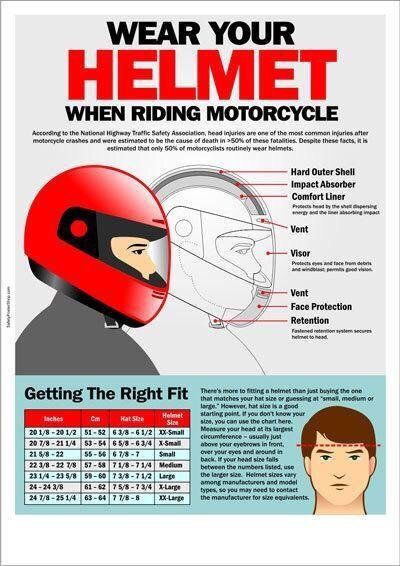
Amy Irwin et al. J Safety Res. 2022 Jun.
. 2022 Jun;81:123-133.
doi: 10.1016/j.jsr.2022.02.004. Epub 2022 Feb 16.
Amy Irwin 1 , Jana Mihulkova 2 , Stephanie Berkeley 3 , Linca-Ruxandra Tone 2
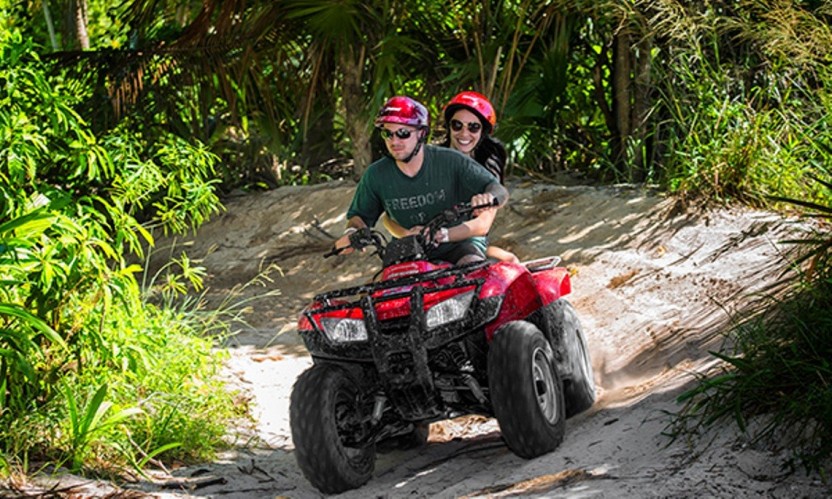 Electronic address: [email protected].
Electronic address: [email protected]. Introduction: All-Terrain Vehicles (ATV) are a popular piece of farming machinery but are linked to many fatalities and injuries every year.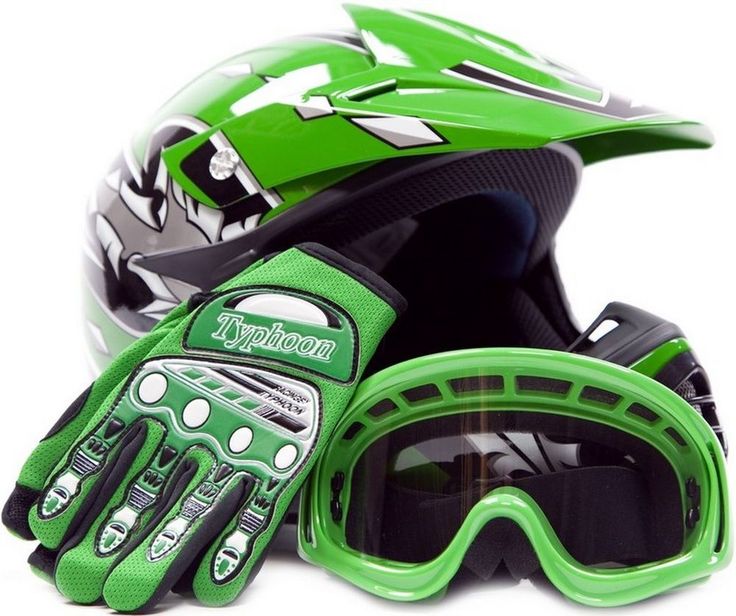 Despite evidence that ATV helmets reduce the risk of serious or fatal injury, research suggests that few farmers wear them. The aim of this study was to explore farmer attitudes toward ATV helmets, using the COM-B model as a framework to identify key barriers and enablers of helmet use and suggest potential interventions to increase helmet use in agriculture.
Despite evidence that ATV helmets reduce the risk of serious or fatal injury, research suggests that few farmers wear them. The aim of this study was to explore farmer attitudes toward ATV helmets, using the COM-B model as a framework to identify key barriers and enablers of helmet use and suggest potential interventions to increase helmet use in agriculture.
Methods: A mixed-methods online survey featuring quantitative and qualitative questions was used to explore key attitudinal factors relevant to farmer helmet wearing. A total of 211 UK and Irish farmers were recruited, including farm owners, managers, workers, and contractors.
Results: Personal exemption from risk, emotional benefits, cognitive barriers, and guideline prompts were all found to be significant predictors of farmer helmet wearing. Key categories within the qualitative data indicated that helmet properties, risk perception, farming culture, and the farming environment could all function as barriers to helmet wearing. Suggested enablers of helmet use included increasing helmet availability and enhancing awareness of the consequences of ATV accidents.
Suggested enablers of helmet use included increasing helmet availability and enhancing awareness of the consequences of ATV accidents.
Conclusions: The key barriers and enablers presented within this paper highlight the relevance of capability (helmet design, time pressure), opportunity (social norms), and motivation (perceived control of risk) when considering farmer helmet wearing behaviors. In order to encourage farmers to wear helmets it will be necessary to design specific interventions using the behavior change wheel.
Practical applications: Key interventions to prompt helmet use include the inclusion of more cues to prompt helmet wearing (e.g., stickers on the ATV), enhanced training and education, and modelling (e.g., key farming figures shown to wear helmets in the media).
Keywords: ATV; COM-B; Farming; Helmet wearing; Interventions; Safety.
Copyright © 2022 National Safety Council and Elsevier Ltd. All rights reserved.
Declaration of Competing Interest The authors declare that they have no known competing financial interests or personal relationships that could have appeared to influence the work reported in this paper.
Substance exposure and helmet use in all-terrain vehicle accidents: Nine years of experience at a level 1 trauma center.
Bethea A, Samanta D, Willis JA, Lucente FC, Chumbe JT. Bethea A, et al. J Safety Res. 2016 Dec;59:61-67. doi: 10.1016/j.jsr.2016.09.006. Epub 2016 Oct 13. J Safety Res. 2016. PMID: 27847000 Free PMC article.
Barriers and facilitators to all-terrain vehicle helmet use.
Adams LE, Aitken ME, Mullins SH, Miller BK, Graham J. Adams LE, et al. J Trauma Acute Care Surg. 2013 Oct;75(4 Suppl 3):S296-300. doi: 10.1097/TA.0b013e318292421f. J Trauma Acute Care Surg. 2013. PMID: 23702632
Scooter crashes at university: intervention tactics for modified behavior and helmet use.
Mueller TS. Mueller TS. Traffic Inj Prev. 2013;14(4):335-9. doi: 10.1080/15389588.2012.715375. Traffic Inj Prev. 2013. PMID: 23531255
Parental attitudes and family helmet use for all-terrain vehicles and bicycles.
Wymore C, Denning G, Hoogerwerf P, Wetjen K, Jennissen C. Wymore C, et al. Inj Epidemiol. 2020 Jun 12;7(Suppl 1):23. doi: 10.1186/s40621-020-00253-2. Inj Epidemiol. 2020.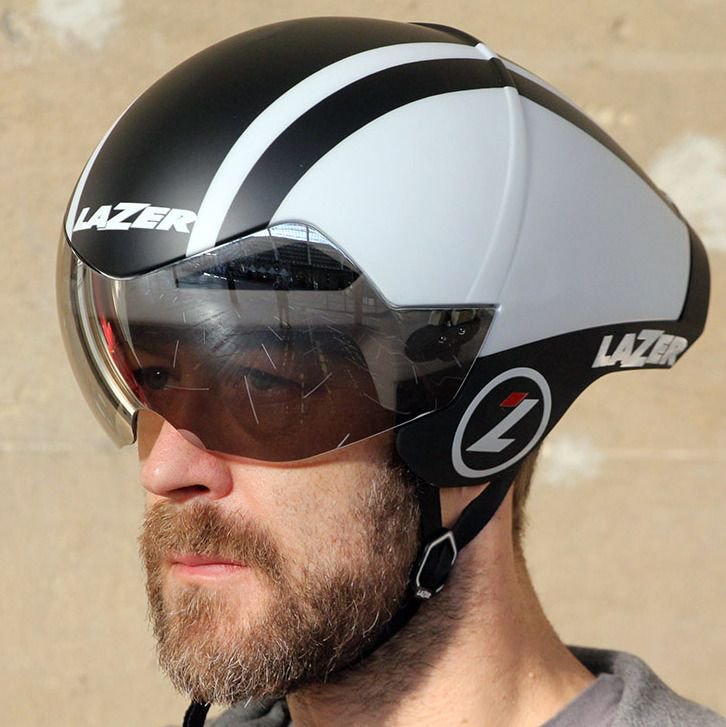 PMID: 32532340 Free PMC article.
PMID: 32532340 Free PMC article.
Non-legislative interventions for the promotion of cycle helmet wearing by children.
Owen R, Kendrick D, Mulvaney C, Coleman T, Royal S. Owen R, et al. Cochrane Database Syst Rev. 2011 Nov 9;2011(11):CD003985. doi: 10.1002/14651858.CD003985.pub3. Cochrane Database Syst Rev. 2011. PMID: 22071810 Free PMC article. Review.
See all similar articles
Full text links
Elsevier Science
Cite
Format: AMA APA MLA NLM
Send To
December 12, 2019
Categories: Alaska Native Medical Center, ANTHC, Healthy People and Prevention
Read the story of Jared Hanson, who was in an ATV crash that was felt by the entire community in Helmets On part 1: Community of New Stuyahok shaken following near-fatal crash.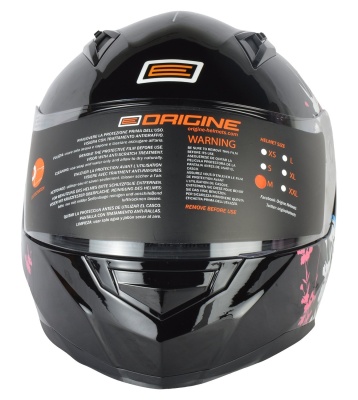
In a vehicle or transportation crash incident, there are three types of damage: to the vehicle, to the human body and to vital internal organs. Traumatic brain injuries are caused by a blow, bump, jolt or other head injury that causes damage to the brain.
From 2012 to 2016, 200 Alaska Native people were hospitalized for traumatic brain injuries on average every year; of those hospitalizations, about one out of five were from ATV, snowmachine and bicycle crashes.
The impacts of Jared Hanson’s ATV crash were far reaching beyond just the initial event. He was launched from the ATV, left with a laundry list of injuries and changes to his life forever.
His crash also sent shockwaves through the New Stuyahok community of about 500 residents. This could have happened to anyone, regardless of experience or age on an ATV. The residents of New Stuyahok asked: How could they make ATV safety a priority and bring awareness so this wouldn’t happen to another child?
“The idea came about while we were at the hospital.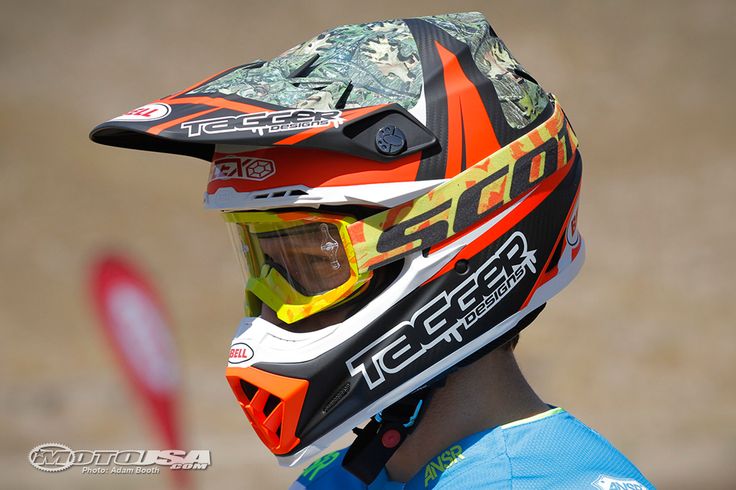 [Providers and I were] discussing the few accidents around the state involving ATVs and that our village had a few teenagers involved,” Gloria Hanson, Jared’s mother, said. “I mentioned that I was a health aide.”
[Providers and I were] discussing the few accidents around the state involving ATVs and that our village had a few teenagers involved,” Gloria Hanson, Jared’s mother, said. “I mentioned that I was a health aide.”
“While caring for Jared, Gloria shared that she was a CHA/P and John shared that he was a Tribal Council Member,” said Susan Romero, the Pediatric Critical Care Nurse Practitioner who cared for Jared and the family during their pediatric critical care stay at ANMC. “They expressed an urgent desire to partner with ANMC to bring ATV safety education to the school as soon as possible.
“They were asking what could be done to get kids to wear their helmets.”
Things started to move quickly. In June 2018, as Alaska ATV season was in full swing, Romero sent out a call to potentially interested parties for support of ATV safety education in New Stuyahok. She met and Dr. Elisha Brownson, Trauma Medical Director at ANMC, met with the family to discuss different possibilities.
In June 2018, as Alaska ATV season was in full swing, Romero sent out a call to potentially interested parties for support of ATV safety education in New Stuyahok. She met and Dr. Elisha Brownson, Trauma Medical Director at ANMC, met with the family to discuss different possibilities.
“The Trauma department at ANTHC not only treats traumatic injuries but also helps provide education for injury prevention to prevent them from occurring in the first place,” Dr. Brownson said.
The ANTHC Injury Prevention program, in the midst of developing an ATV safety course for rural Tribal communities, was brought on board. The program, which uses a public health approach to injury prevention, works with a statewide network of local Tribal injury prevention specialists, including Kurt Buttelmann from Bristol Bay Area Health Corporation. His recent ATV safety efforts in Pilot Point primary school included education, local enforcement by the Village Police Safety Officer and helmet distribution.
“There have been a few crashes on ATVs, but every passenger was wearing a helmet and did not have a head injury,” said Buttelmann, BBHC Injury Prevention Specialist. New Stuyahok had similar, but specific needs.
“There was a community ask, not only from the Tribal Council but also from the school, Chief Ivan Blunka, to have more education,” said Ingrid Stevens, ANTHC Injury Prevention Manager.
In August 2018, Chief Ivan Blunka School principal Robin Jones and vice principal Meghan Redmond worked with BBAHC (Buttelmann) and an ANTHC team from Trauma (Brownson), Pediatric Intensive Care (Romero), and Injury Prevention (Stevens and Andrea Grenier) to coordinate a visit to New Stuyahok. Jones and Redmond organized a community meeting and to help community leaders better understand their needs. Attendees included State Troopers, Community Health Aide Providers (Hanson), Tribal Council president and board members, and parents.
Since we’re getting helmets, this is what I’m saying to my boys.
John HansonNow, if you want to ride a Honda – helmet on.”
“Community members reached out to build a partnership with ANTHC, both with the Trauma department and Injury Prevention, to help come up with a plan,” Brownson said. “This included engaging the community with education about ATV crashes, as well as building a curriculum for students to learn about ATV safety.”
Following the gathering, ANTHC Injury Prevention was granted permission from the Arkansas Children’s Hospital, to adapt their ATV safety material specifically for an Alaska Native youth audience. Similar work had been done with the Kenai Peninsula Safe Kids coordinator, Jane Fellman, and included safety activities for each lesson, like how to properly fit a helmet. The Injury Prevention program and Trauma department included these activities and created an ATV safety workbooks and lesson plans for two age groups: students grades K-5 and 6-12.
The ANTHC team traveled back to New Stuyahok in January 2019 to deliver the lessons to the 6th through 12th graders. They and Buttelmann followed up with the younger students during a third visit in late April during the school’s Discovery Week, where students learned traditional practices like sewing, meat processing and hunter safety along with getting to try new things like disc golf. Because ATVs are such an important part of life in rural Alaska, there was also an ATV maintenance class during Discovery Week.
They and Buttelmann followed up with the younger students during a third visit in late April during the school’s Discovery Week, where students learned traditional practices like sewing, meat processing and hunter safety along with getting to try new things like disc golf. Because ATVs are such an important part of life in rural Alaska, there was also an ATV maintenance class during Discovery Week.
“We’re being provided with information from specialists,” special education teacher Ben Griese said about the visits from the ANTHC team. “People that know and can provide us with real, valuable information that we can use.”
BBAHC and ANTHC were also able to help secure funding for helmets for every child that took the ATV safety course. In total, 120 students in New Stuyahok went through the education and received a helmet. To make the helmets more appealing, ANTHC created a “Helmets On!” sticker with the school’s mascot, the bald eagle.
ANTHC team that traveled to New Stuyahok to teach ATV safety.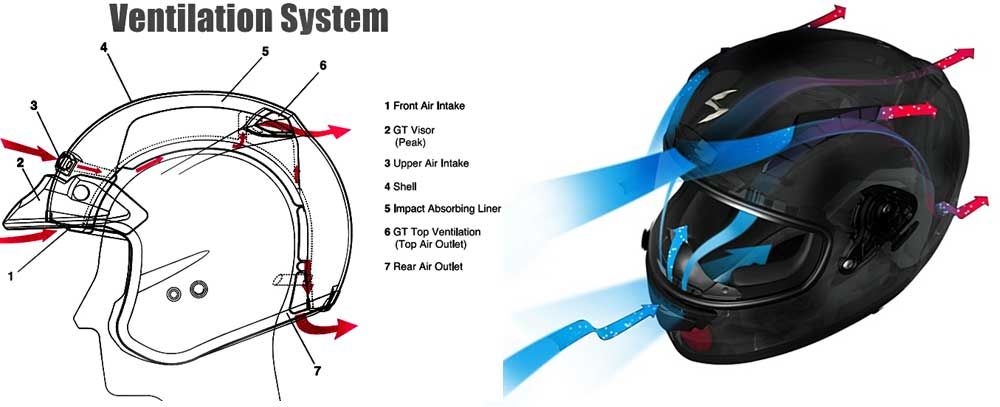 Left to right: Hanna Gillis, Susan Romero, Dr. Elisha Brownson and Ingrid Stevens.
Left to right: Hanna Gillis, Susan Romero, Dr. Elisha Brownson and Ingrid Stevens.“ATVs are a strong and versatile mode of transportation, much like Alaska Native people. Changing the culture of ATV safety, which includes snowmachines in the winter, begins at the community level,” said Stevens.
The community meetings held in New Stuyahok started the conversation, with discussion about gathering additional data about the cause of ATV crashes, improving roads and trails, creating municipal laws and enforcement, and continuing to educate young riders.
“Throughout the numerous visits to New Stuyahok, the community readily opened their homes to us and embraced us into their community,” Romero said. “It has been a great pleasure to learn about their way of life while they learned about health and injury prevention from us. The community’s commitment to this program has been an amazing experience.”
During the last visit, Bristol Bay Native Association transportation planner, Annie Fritze, attended the community meeting and shared opportunities to include these activities in their Tribal Transportation Safety Plan. John and Gloria Hanson were also in attendance and supported the plan.
John and Gloria Hanson were also in attendance and supported the plan.
“We’ve been doing this a long time from our ancestors to who we are now – and then passing it down to our kids so they can pass it down to their kids,” John Hanson said about subsistence hunting.
Now they aim to do the same with ATVs.
“We’re teaching our kids now about safety. So, since we’re getting helmets, this is what I’m saying to my boys. Now, if you want to ride a Honda – helmet on.”
For ATV safe riding and planning with TRIPSS, visit www.anthc.org/HelmetsOn.
For more ANTHC videos, visit www.anthc.org/videos.
You can get injured even at low speed and without falling - from a bouncing branch or stone, a torn tow rope or an insect that has got into your face.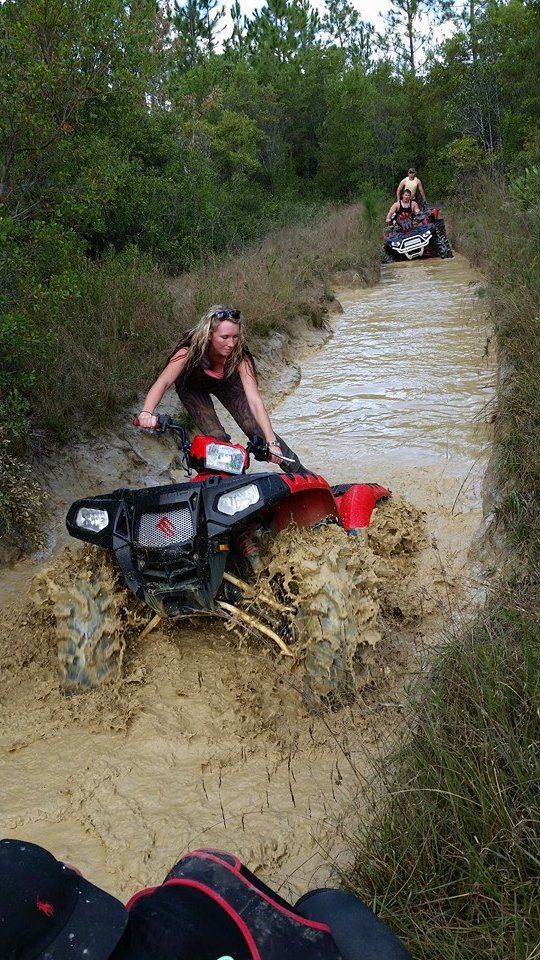 Restoring health at the same time is more expensive and longer than an ATV. Therefore, a helmet is required. From what materials and what form is safer - we will tell in the article.
Restoring health at the same time is more expensive and longer than an ATV. Therefore, a helmet is required. From what materials and what form is safer - we will tell in the article.
Helmets differ in shape, weight, material and the presence of a visor (protective glass). The division into "male" / "female" or "children's" / "adults" is conditional, they differ only in colors and size.
Lightweight, unrestricted visibility and well ventilated. Do not interfere with drinking, eating and talking. Protect from branches, stones and a fine when meeting with a traffic police inspector. Due to the open lower part of the face, there is a high risk of jaw injury during falls and collisions. Therefore, such helmets are not suitable for an ATV.
Open helmets include helmet, three-quarter, half and jet.
Heavier and more expensive than open helmets, but completely cover the head.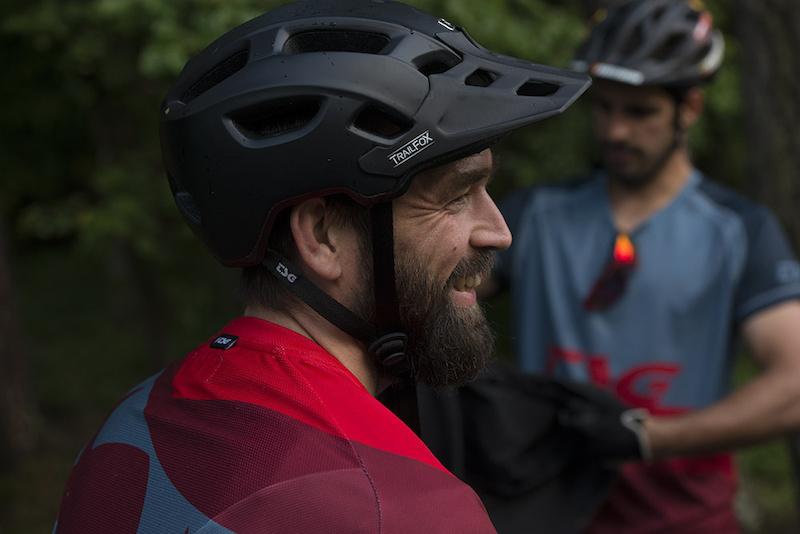 In addition to injuries, they can partially or completely protect against wind, noise, cold and dust.
In addition to injuries, they can partially or completely protect against wind, noise, cold and dust.
Int. It is the safest helmet available due to its integral construction. It is also the best in terms of noise isolation and aerodynamics, but this is irrelevant for an ATV. Of the minuses - it is stuffy to ride in it through the forest. Visibility is worse than in a cross helmet. No visor.
Cross . A kind of integral with a visor for protection from branches, sun and drizzling rain. It has an extended forum for easier breathing and reinforced chin protection. As a rule, such helmets are not equipped with a visor. Goggles are worn instead - they provide good viewing angles and ventilation. An example of a cross helmet is 509 TACTICAL.
Modular ( transformer, flip-up ). Similar to the integral, but has a lifting jaw arch. Due to this, the rider can drink, eat and communicate in a helmet.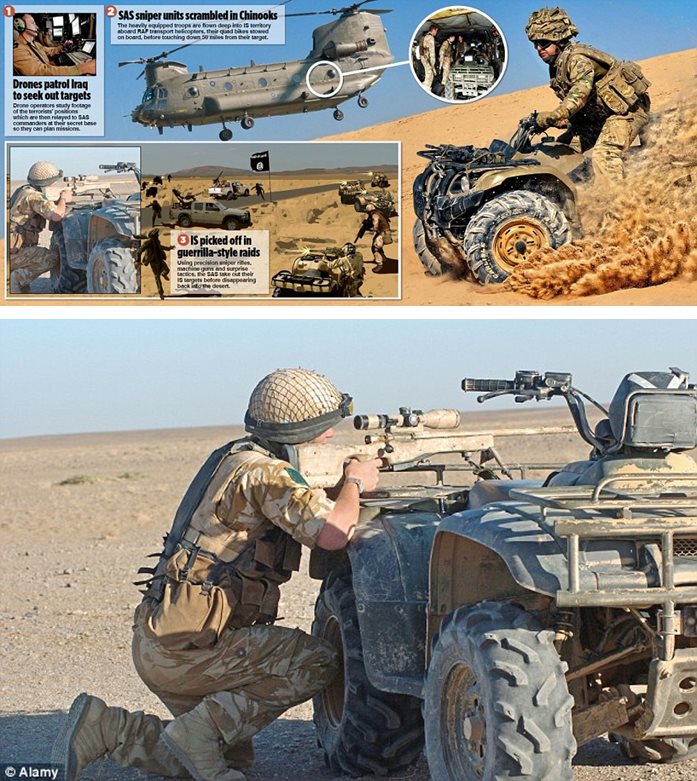 At the same time, due to the complex design, the modular is heavier and more expensive than other helmets. There may be ventilation problems and whistling when driving. The safety of the modular is the lowest among closed helmets - the arc sometimes flies out on impact. An example of a modular helmet - 509Delta R4.
At the same time, due to the complex design, the modular is heavier and more expensive than other helmets. There may be ventilation problems and whistling when driving. The safety of the modular is the lowest among closed helmets - the arc sometimes flies out on impact. An example of a modular helmet - 509Delta R4.
Integral
Cross
MODULAR 7
Hars of the ATV consisted of a solid external membrane (SCOLLUPO), internal amorticious compassion and toll.
Outer sheath can be made of thermoplastics or composites. Polycarbonate (plastic) helmets are heavier and more massive than composite ones, less durable, but cheaper. The most unreliable are made of ABS plastic. High-quality plastic is elastic, but bursts under extreme loads.
Composite helmets consist of fiberglass, aramid, fiberglass, carbon fiber, fiberglass, carbon fiber, carbon, kevlar and similar materials that are bonded with resins, compressed and baked. The strongest have at least three layers with different characteristics of penetration, compression / stretching and stiffness. Rinse, preventing penetrating damage. They are lighter and more reliable than plastic ones, but they are more expensive. The outer shell evenly distributes the impact energy during a crash and transfers it to the soft inner layer.
The strongest have at least three layers with different characteristics of penetration, compression / stretching and stiffness. Rinse, preventing penetrating damage. They are lighter and more reliable than plastic ones, but they are more expensive. The outer shell evenly distributes the impact energy during a crash and transfers it to the soft inner layer.
The inner shell consists of multi-layered EPS (expanded polystyrene) of different densities and thicknesses. It is a versatile, lightweight material that dampens impact energy, and over time, for convenience, takes the form of a head.
Foam seals and fabric part are added to the inner shell. In high-quality helmets, it is removable - you can wash or replace it.
The replacement part of the helmet is made from hypoallergenic fabrics. It creates additional comfort, warms in the cold and removes moisture in the heat. Synthetic is lighter and less demanding to care for, but can irritate the skin. Natural is more comfortable, but heavier, more difficult to care for and less hygienic.
The visor is made of polycarbonate. It can be transparent, tinted or colored. There are visors with double glasses and protection against scratches. They can also be covered with films and special compositions: anti-fog, anti-reflective and anti-fogging from the inside.
The visor can be equipped with heating (anti-fogging and anti-icing), supplied as standard or purchased separately. He receives power through the wire from the ATV, which is not always convenient for extreme driving.
Travel . A cross-country helmet is suitable for summer and spring - it is better ventilated and protects from the sun. For autumn and winter, it is better to choose an integral with built-in visor heating and an exhaled air removal system. Modular can be worn for a short walk, but on a long journey, due to its greater weight, it is less comfortable than other helmets.
Track riding and tricks . The best choice is a cross helmet made of composite materials. In addition to injuries, it will protect against overloads, in which it is easy to overstrain or damage the muscles of the neck in a heavy helmet.
The best choice is a cross helmet made of composite materials. In addition to injuries, it will protect against overloads, in which it is easy to overstrain or damage the muscles of the neck in a heavy helmet.
Household work . A cross-country helmet or integral without a visor, with good ventilation, will do.
Fit . The helmet should evenly fit the head, do not press, do not rub. A spacious helmet that dangles from the head increases the risk of injury. Therefore, you do not need to use someone else's and buy a child "for growth."
To test the fit of the helmet, use both hands to twist it side to side, resisting with your head and neck. The helmet must not rotate. Shake and turn your head. It is important that the helmet does not interfere with visibility and does not narrow the field of peripheral vision. If you wear glasses, try on a helmet with them.
Life hack for men with a narrow face - if all the helmets dangle on you, pay attention to the so-called "female" models, they are often narrower.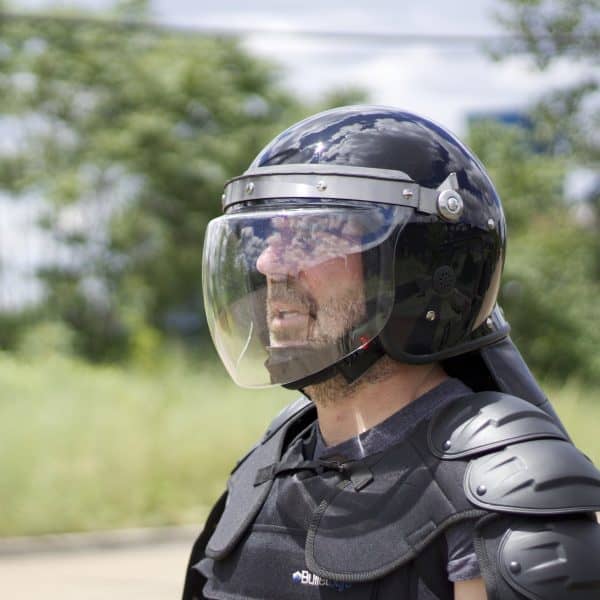 The opposite is true for women with wide cheekbones - take a closer look at the "male" models.
The opposite is true for women with wide cheekbones - take a closer look at the "male" models.
Weight . The more weight, the faster the neck and head get tired. For short walks, the extra 100 grams is not important, but it is better to overpay for them when choosing a helmet for travel and extreme riding.
Certification The helmet must be certified to world standards. Therefore, if the standard is unknown to you, ask the seller about it and double-check the information on the Internet.

An example of the location of certification marks
Less popular: GOST R 41.22-2001 (Russia), JIS (Japan), SAI AS1698 (Australia), SG or CPSA Japan (Japan), BS6658 (UK, obsolete) , ACU (Great Britain).
Expiration date and date of manufacture. These are quality markers because they are affixed, as a rule, only serious brands. The helmet cannot be used longer than the expiration date - by this time the materials lose their original protective properties.
The vents and breather are important passive protection against fogging and overheating.
Fasteners. There are different shapes, but D-rings (D-shaped fasteners-rings) are considered the most reliable, and the quick-release fastener with a ratchet is considered the most convenient.
The visor lift mechanism is one of the most vulnerable parts of the helmet. Should be comfortable to operate without jamming.
A helmet is a one-time consumable to protect the head at the moment of impact. After that, you need to buy a new one. In terms of wear and aging of materials, the helmet is designed to last approximately 5 years. But, as a rule, it serves from one to three seasons.
The inner lining is wrinkled and compacted when worn. After falls, impacts, hitting small stones, microcracks appear on the surface. Accordingly, the protective properties are reduced.
After an accident, if there is visible damage, the helmet must be changed.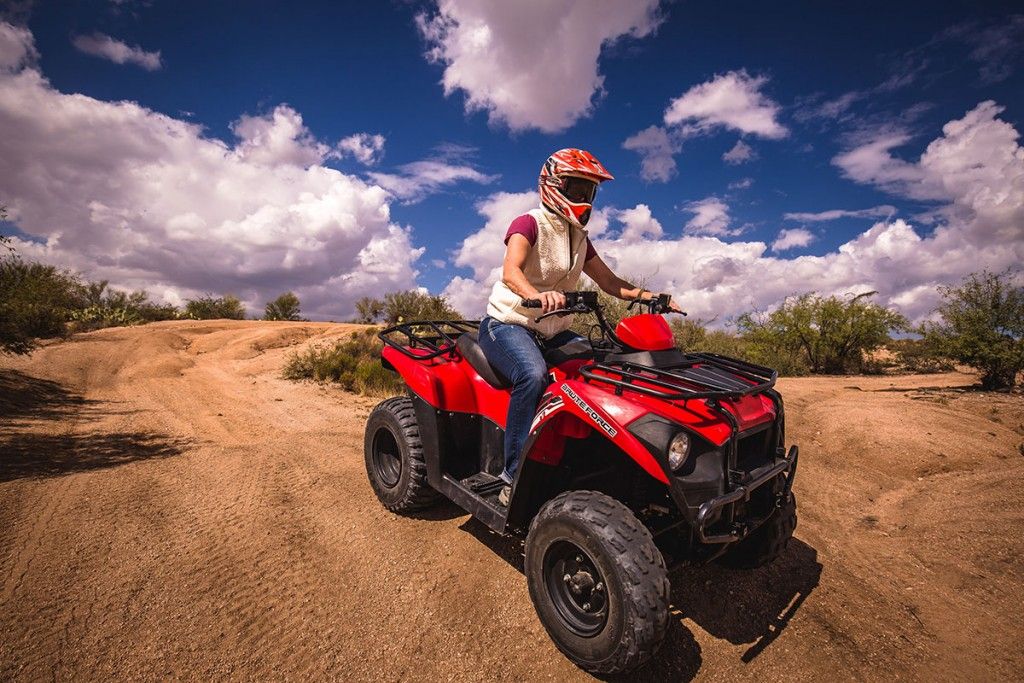 If there is no visible damage, you can use the service of checking the helmet from the manufacturer or a specialty store.
If there is no visible damage, you can use the service of checking the helmet from the manufacturer or a specialty store.
Individual parts can be replaced:
How often have you grabbed a helmet and a pair of goggles only to find that they don't fit together? Thanks to the question of one of the readers, we have compiled an extensive table of compatibility of various glasses and helmets. Below is a list and table of the various goggles and helmets we have combined and matched.
Fogging, air leakage and more! The idea of this article is to see if there are certain combinations that work better than others.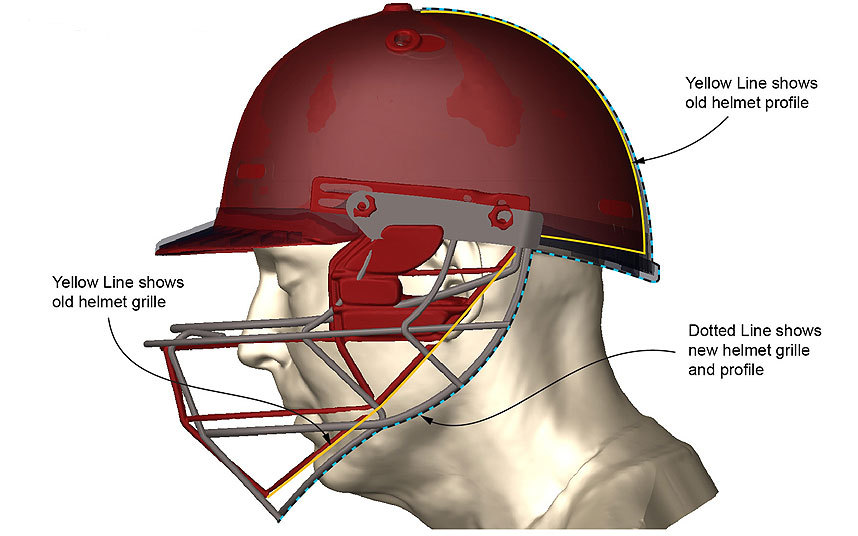 Not everyone can afford all the newest and best, we understand this. Someone has glasses that he really likes from one manufacturer, and a helmet from another. In fact, the next time you go for a ride, pay attention to those wearing an MX type helmet and you will notice that people are wearing all sorts of combinations of helmets and goggles. Many people take spare glasses or lenses with them when they travel. You need to be prepared in case of bright sun or "flat light", or if you go out at night, you need to have clear lenses. And besides, to be honest, some people just sweat more than others!
Not everyone can afford all the newest and best, we understand this. Someone has glasses that he really likes from one manufacturer, and a helmet from another. In fact, the next time you go for a ride, pay attention to those wearing an MX type helmet and you will notice that people are wearing all sorts of combinations of helmets and goggles. Many people take spare glasses or lenses with them when they travel. You need to be prepared in case of bright sun or "flat light", or if you go out at night, you need to have clear lenses. And besides, to be honest, some people just sweat more than others!
For example, I sweat very quickly, mostly mountain skiing, and I need well-breathable goggles. True, on really frosty and snowy days, especially on the raid, snow dust can be a major problem, especially if you are not at the head of a large group. All the snow dust from the air gets into your glasses and can end up behind the lenses, which is no good! Recently, I had to experience this while following a raid at temperatures below -15⁰ C.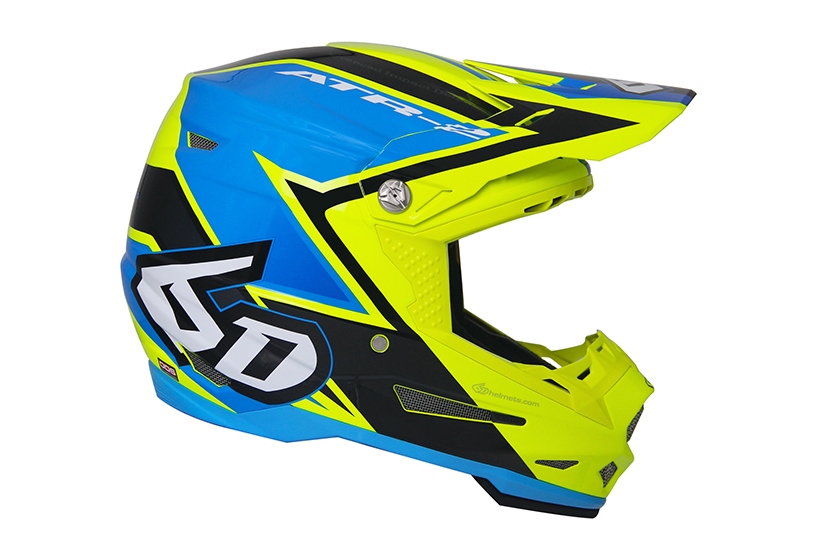 Snow dust just hung in the air, as if frozen there forever! After five minutes I had to stop and change my goggles because they were clogged with ice and snow behind the lenses! As a newbie to flatland raiding, I turned to Butch Weltham for advice. He told me about one of his tricks - to close all the vents of the glasses, and sometimes use tape, or even paper napkins. I had no idea how ventilated my goggles were until every hole was covered. He said that he always takes paper with him in case of such unforeseen moments in the middle of nowhere ... and I did not 100% understand what he meant, but the problem was solved, as I thought.
Snow dust just hung in the air, as if frozen there forever! After five minutes I had to stop and change my goggles because they were clogged with ice and snow behind the lenses! As a newbie to flatland raiding, I turned to Butch Weltham for advice. He told me about one of his tricks - to close all the vents of the glasses, and sometimes use tape, or even paper napkins. I had no idea how ventilated my goggles were until every hole was covered. He said that he always takes paper with him in case of such unforeseen moments in the middle of nowhere ... and I did not 100% understand what he meant, but the problem was solved, as I thought.
I headed further down the track and realized that the problem was not only in the holes, but also in the way the goggles sat in the helmet cutout. Now the snow dust was coming in from the side of the foam seal because it didn't fit snugly against my face. Cross-country riders, and especially the guys who ride both raids and mountains, learn very quickly that no helmet and goggle combination is the same.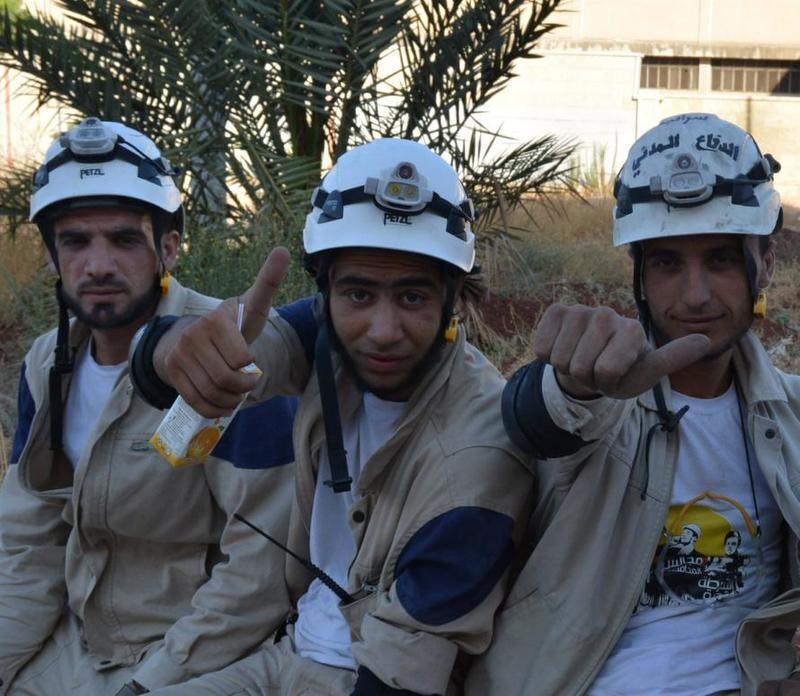 Some combinations are simply better than others for breathability due to the way the goggles fit into the helmet cutout.
Some combinations are simply better than others for breathability due to the way the goggles fit into the helmet cutout.
For those who ride in the mountains, it is necessary that the equipment "breathe" during our "cardio workouts". I get sweating problems very quickly. However, a good balaclava makes a huge difference, especially one like the Klim Arctic, which has a neoprene nose piece so that the exhaled air is directed down the helmet instead of towards the goggles. All major manufacturers make built-in parts for the nose and mouth. They function in the same way as a balaclava with a nose pad, and most of them have foldable parts that allow them to be molded to the shape of the bridge of the nose for better insulation.
We found that the Klim F 5 and 509 Carbon goggles pair well with the goggles from both sets (which are now both F). Zowa makes glasses with HUGE peripheral vision.
I personally experience claustrophobic symptoms when wearing a balaclava, helmet and goggles, so I prefer goggles with a large field of view and don't panic if I start to sweat a lot and need to take off my gear immediately. Visibility is the main reason why most people wear goggles instead of full face helmets. With the right combination of helmet and goggles, the goggles rarely fog up, plus the peripheral vision is wider on both sides. Companies are working to create the best anti-fog combinations, making it very easy to change lenses and including heated lenses. The lenses we've tested so far are a waste! Although I would like the batteries in some models to last longer and have a wider field of view.
We would like to present you the best combinations of goggles and helmets. Of course, we couldn't foresee all possible scenarios, but we wanted to give you a starting point for thinking about combinations. Remember, be sure to try on your helmet and goggles at dealers or at shows because everyone's heads, faces and preferences are different.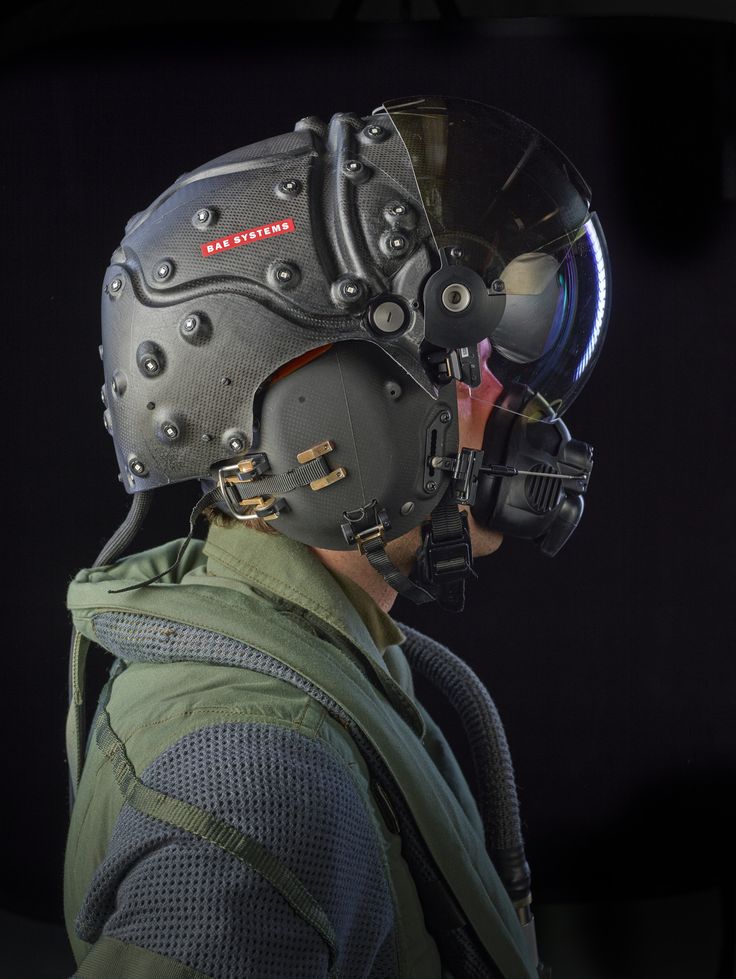 Certain combinations may work for some and not for others.
Certain combinations may work for some and not for others.
If there is a decisive factor in testing such combinations, it is most of all in goggles. All the helmets we tested had good sized goggle cutouts that fit almost any goggles we tried on these helmets, some better than others, but almost none that couldn't be adjusted. However, some glasses are higher in the center, which makes the fit somewhat tighter. We also tested the new Zowa goggles, which are visor goggles. These goggles are designed to fit both the helmet and the face. Basically, they are attached to the part of the helmet and around the cheeks and nose. If you need wide peripheral vision and goggles that can be worn under regular glasses without rubbing against the lenses, then this is a great option. Our test driver Kevin thinks this is the best invention since sliced bread. They are HUGE and do a great job if you are not bothered by the surprised looks of people.
We also found that the test drivers in our group preferred one combination over the other, especially the flat riders.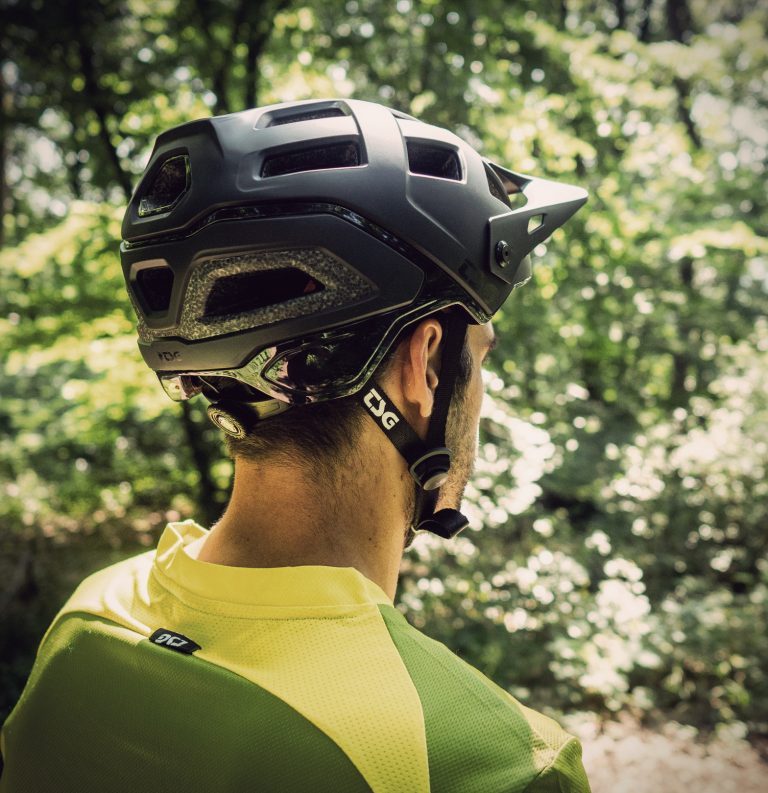 In this case, personal tastes were the only differences we could identify, other than the shape of the face. Some people's cheeks stick out more when they put on a helmet, and someone will say: "Take a bigger helmet!" And yes, it can help, but those helmets were the sizes that they liked and felt most comfortable in... And yes, of course, hamster-like cheeks affect the fit of the goggles!
In this case, personal tastes were the only differences we could identify, other than the shape of the face. Some people's cheeks stick out more when they put on a helmet, and someone will say: "Take a bigger helmet!" And yes, it can help, but those helmets were the sizes that they liked and felt most comfortable in... And yes, of course, hamster-like cheeks affect the fit of the goggles!
These were the criteria by which we judged all the various combinations. As mentioned above, we understand that people have different faces, some have a larger helmet, some have a smaller one. Nearly all helmets tested were in L and XL sizes, as more helmets are sold in these sizes than others. We also tested several children's helmets.
OK - fits well but needs a bit of sweat to make it more comfortable, not the best peripheral visibility, isolation could be better.
Good - fits well, but some insulation improvements would not hurt, although, in general, it is better. Peripheral vision is limited compared to other glasses.
Peripheral vision is limited compared to other glasses.
Excellent is the best combination of goggles and helmet, excellent peripheral vision, fits very well, insulation is just right and together they are very comfortable.
| GLASSES | HELMETS | |||||||||||
| Klim F3 | Klim F5 | Castle X Mode MX Station | Castle Youth Mode MX Station | 509 Altitude Carbon Fiber Helmet | Fly Kids Kinetic Elite | Fly F2 Carbon Forge MIPS | fly tosin | FXR Boost Prime | FXR Blade Carbon 2.0 | FXR Torque Core | FXR Throttle Youth | |
| Klim Viper Pro | Good | Excellent | Good | Good | Excellent | Good | Good | Good | Good | Excellent | Excellent | Good |
| Klim Oculus | Excellent | Excellent | Excellent | norm | Excellent | Good | Excellent | Good | Excellent | Excellent | Excellent | Good |
| Zowa 365 | Excellent | Excellent | Good | norm | Excellent | norm | Excellent | Excellent | Excellent | Excellent | Excellent | norm |
| ABOM Lumen | Excellent | Excellent | Good | norm | Excellent | Good | Excellent | Excellent | Excellent | Excellent | Excellent | Good |
| Oakley Canopy | Excellent | Excellent | Excellent | norm | Excellent | Good | Excellent | Excellent | Excellent | Excellent | Excellent | Good |
| Castle OTG | Good | Good | Excellent | Good | Good | Good | Good | Good | Good | Excellent | Excellent | Good |
| Castle SE X2 | Good | Good | Excellent | Good | Good | Good | Good | Good | Excellent | Excellent | Excellent | Good |
| FLY Focus | Good | Good | Good | Excellent | Good | Excellent | Good | Good | Good | Good | Good | Excellent |
FXR Core Elec. | ||||||||||||